
I have a gormands dream job – I am a chef, but I do not work in a trendy gourmet restaurant or hot eatery catering to foodies. In truth, most of my concoctions would taste terrible should anyone make the mistake of eating them. You see, I cook food designed to look great for photographs, and the flavor is simply not a concern. I am a food stylist, and my job is to cook gourmet meals and deliver recipes that are absolutely mouthwatering delicious — to the eye.
I bet you think it sounds like an exciting career, and it is after a fashion. Just not in the way one may think. Yes, it is nice not to have to slave away in a Michelin starred restaurant kitchen. I don’t have to deal with the hassles of being a celebrity chef with huge kitchen staff and demanding dinners with sophisticated palates. I don’t have the daily hustle and grind demands of being a line cook in a top-tiered local restaurant cranking out hundreds of dishes an hour. Instead of serving a community of diners who enjoy a gourmet meal paired with excellent wine, good companionship, and a lively buzz in the atmosphere, my job is done mostly solo at my own hours. I get to create culinary works of art designed to excite the eye without the hassles of the nightly dinner rush. While this work may be noteworthy and exciting, it is also more than a bit of a flavorless, if not lonely, profession.
Here is a taste of a typical week in my life as a food stylist chef.
Monday
The morning was spent booking a food gig for late next week. It is a shoot with a photographer I like working with, but his studio is an hour and a half away. It’s not just a long schlep that bums me out, but the genuine concern that when my meals have to travel a long distance, they are more likely to lose their integrity. Speed bumps and Uber delivery vehicles making sudden stops without signaling, are a genuine hazard and much-hated hazard in my line of work. 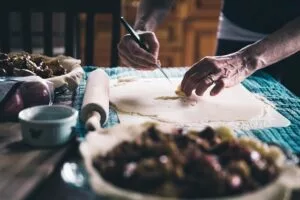
As usual, the job is unconfirmed, but the photographer promises to get me the details soon and promises me that the client will meet my rate. So I pencil him into the calendar.
Next, I pour a cup of coffee and wait. This week’s job is for a popular cooking website, and the editors are famous for long Monday morning meetings where they nosh on all kinds of wonderful danishes, coffee cakes, and other fresh-baked breakfast treats. The shoot is on Thursday, and by the time the email finally arrives, half the morning is gone. The recipes are complicated and scientific, so the lost time is going to hurt. This cooking job is going to be a challenge. Step one is to envision how the final dish will look when cooked to perfection. The best way to do this is simply to follow the recipe.
Step two is to adapt the recipe to create menu items that can stand up for hours under hot studio lights and somehow come off looking fresh. This phase of cooking is where creativity kicks in. The lemon pastry filling on the dessert tart is going to be a problem.
Next, I Zoom with the photographer to discuss how the dishes will look. This discussion is vital as she will be planning on how to stage the shot. She, too, has a lot to plan, and we need to be in sync if this technically challenging menu masterpiece will come out looking delicious. We conference in the set stylist, think hair stylest for food, to discuss the ice-cream. The photographer wants real ice cream, and we agree that store-bought will be sufficient. That is one item off my list. But I remind him to get a lot more than the recipe makes, otherwise on the day, we may end up – and often do – running out for more. That means more time wasted and more opportunity for the tarts to lose their fresh-baked luster.
Now it is time to hit the shops. The shopping list is extensive, allowing for testing the recipe and several attempts at getting each item perfect. Worse, the editors have called for several hard to source ingredients. The readers will have trouble finding them and will balk at the cost. I make a note to discuss.
The butcher really is a cut above. He doesn’t flinch when I ask for a rabbit with its kidneys or six pigeon breasts. I leave the order with him and start my search for lemons in different sizes – the photographer wants a whole lemon in the shot, so various sizes have to be bought to get it right on the day. Typically I hit two to three supermarkets and greengrocers before heading to Costco. And while I am shopping, I am thinking about the ingredients very differently than a typical chef working his way through a local farmers market. For example, I can tell that the supermarket salad will not hold up under the lights, but the parma ham has excellent color and texture. One more stop at the cheese shop and then home to start testing. Sadly I have nothing for dinner, so tonight, we will be ordering in.
Chef’s recipes can often take two days from start to finish. The meal the editors have chosen is a challenging one to create, and I need to get cooking. By 9 pm, the rabbit is chopped and packed into the terrine, cooking at an impossibly low temperature for 6 hours. It needs a day to rest in the fridge, so I plan to call the butcher first thing in the morning to order more if all goes wrong.
Next, I start to make the pastry, which is a mistake. The dough is not coming together, and I dump the butter and ground almonds goop into the trash. I am not sure if it is me or the recipe. I will sort that mess out tomorrow. It’s been a long day already.
Tuesday
I wake up early and transfer the terrine to the fridge and weigh it down with cans. The rabbit is looking good. For the pastry, I alter the amounts as little as possible to stay 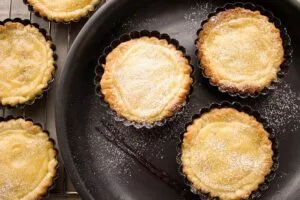 faithful to the original recipe and bake tarts to test it. They work fine, and since they taste good, I eat them for my breakfast while pondering my problem. The recipe will work for the readers, making it at home, but I can’t use it for the shot. These deliciously flakey tarts will disintegrate under the hot lights. Instead, I decide to use an almond pastry recipe that will look just as tempting but will handle the studio’s heat. The jellies in the tart are also a problem. They may taste sweet, but they are as wobbly as my grandmother’s bland Jello mold. To adjust, I strain the fruit through muslin overnight, which will make a beautifully clear jelly.
faithful to the original recipe and bake tarts to test it. They work fine, and since they taste good, I eat them for my breakfast while pondering my problem. The recipe will work for the readers, making it at home, but I can’t use it for the shot. These deliciously flakey tarts will disintegrate under the hot lights. Instead, I decide to use an almond pastry recipe that will look just as tempting but will handle the studio’s heat. The jellies in the tart are also a problem. They may taste sweet, but they are as wobbly as my grandmother’s bland Jello mold. To adjust, I strain the fruit through muslin overnight, which will make a beautifully clear jelly.
Wednesday
Once again, I am up early. I make the jellies using the strained juice. They look amazing. But all that work produced only enough jellies for two pastries, and I need six! I hurry back to the market and set the fruit up quick as I can. It is going to be close as I haven’t got another overnight to let it strain. The entire meal, with extras, needs to be looking scrumptious and ready to go tonight. Tomorrow is a busy day. The last thing I do is set the jellies and go to bed, thinking I will just make it.
Thursday
I arrive at the studio early morning with my car carefully packed with my culinary creations. I arrive just in time for the pre-production meeting. I look at the set and see that the photographer has set the cake stand at a 45-degree angle. There is no way my lemon tart will hold up! At that steep angle, the jelly filling will run all over the place. We put one on the set, and before the electrician turns on a light, the jelly is running everywhere.
Fortunately, the rabbit terrine cuts beautifully, and it looks divine. The photographer starts with the rabbit. That gives me time to whip up a lemon concoction in the test kitchen that will sparkle with a hint of lemon yellow and hold up to the steep angle. I manage something that will suffice, but the final picture does not glisten the way I would have liked.
Friday
I check in with the editors. I let them know about the adjustments that I made with their original recipes when I first cooked them. There were not too many changes, but these were technical recipes that the average home cook will have difficulty making, let alone finding all the ingredients. I make some suggestions on how to simplify the recipes for the home cook. Hopefully, they will listen.
Saturday and Sunday
I sleep in—no pastries for me.
Monday
Once again, I am waiting for details for the next job. I drink my coffee and enjoy the last of the lemon pastries. Here’s hoping for something juicy.

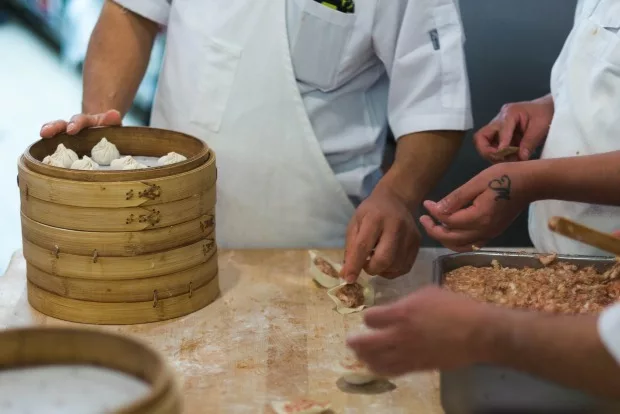 me vigorously by the hand. It was me (and thousands like me) who put you in your Armani suit and your supercar. You would, after all, be nothing without us — your devoted minions — celebrity-chef junkies who just can’t get enough of you.
me vigorously by the hand. It was me (and thousands like me) who put you in your Armani suit and your supercar. You would, after all, be nothing without us — your devoted minions — celebrity-chef junkies who just can’t get enough of you. actually be telling us about.
actually be telling us about.

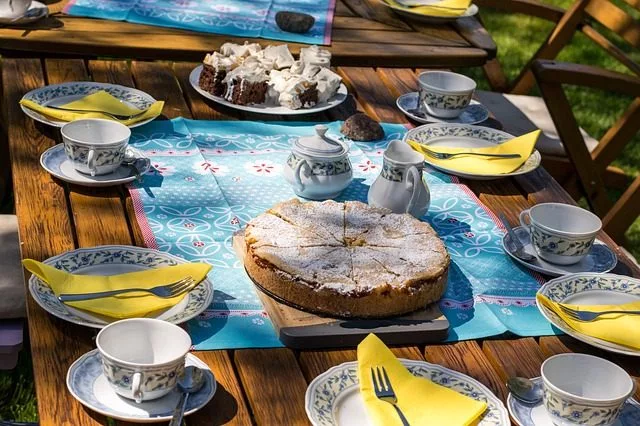
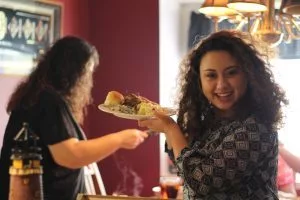
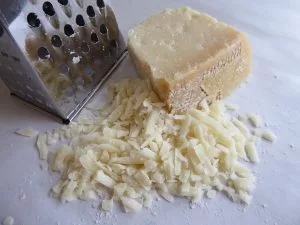
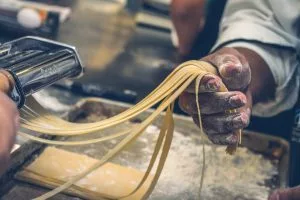


 faithful to the original recipe and bake tarts to test it. They work fine, and since they taste good, I eat them for my breakfast while pondering my problem. The recipe will work for the readers, making it at home, but I can’t use it for the shot. These deliciously flakey tarts will disintegrate under the hot lights. Instead, I decide to use an almond pastry recipe that will look just as tempting but will handle the studio’s heat. The jellies in the tart are also a problem. They may taste sweet, but they are as wobbly as my grandmother’s bland Jello mold. To adjust, I strain the fruit through muslin overnight, which will make a beautifully clear jelly.
faithful to the original recipe and bake tarts to test it. They work fine, and since they taste good, I eat them for my breakfast while pondering my problem. The recipe will work for the readers, making it at home, but I can’t use it for the shot. These deliciously flakey tarts will disintegrate under the hot lights. Instead, I decide to use an almond pastry recipe that will look just as tempting but will handle the studio’s heat. The jellies in the tart are also a problem. They may taste sweet, but they are as wobbly as my grandmother’s bland Jello mold. To adjust, I strain the fruit through muslin overnight, which will make a beautifully clear jelly. and then
and then